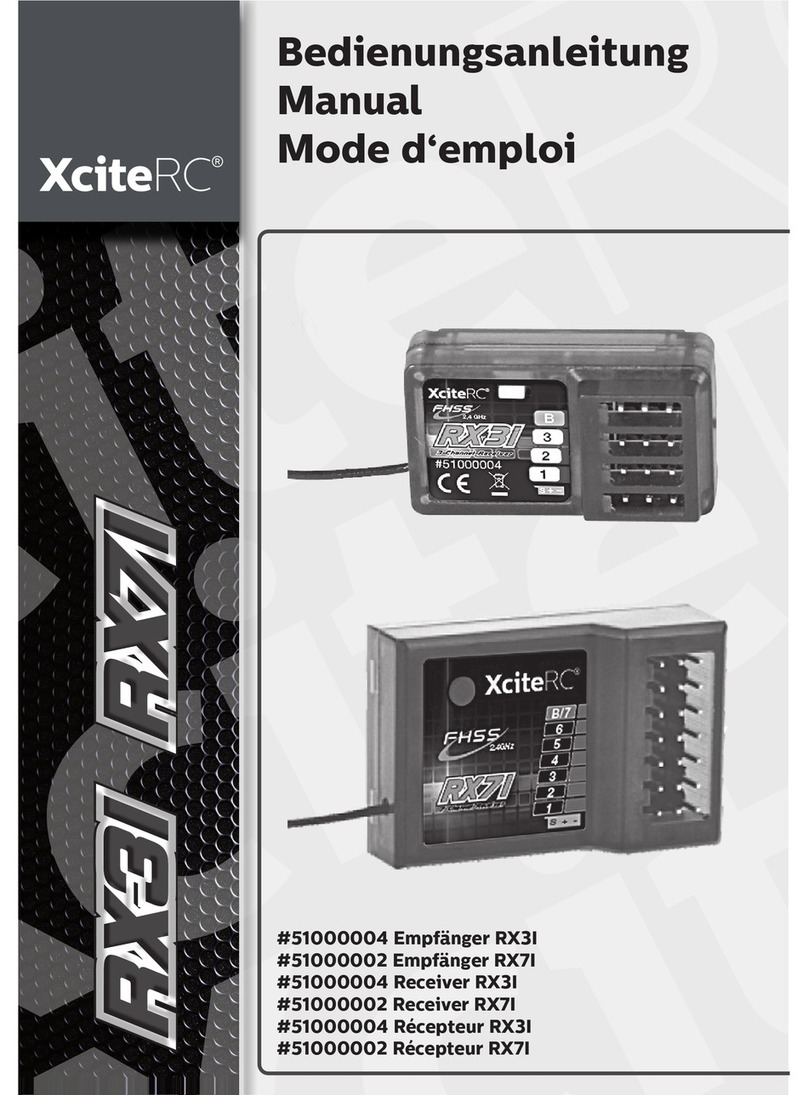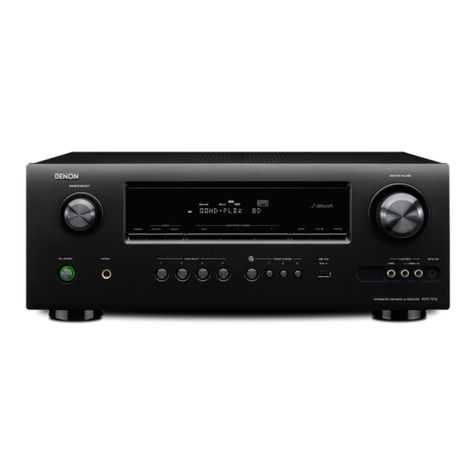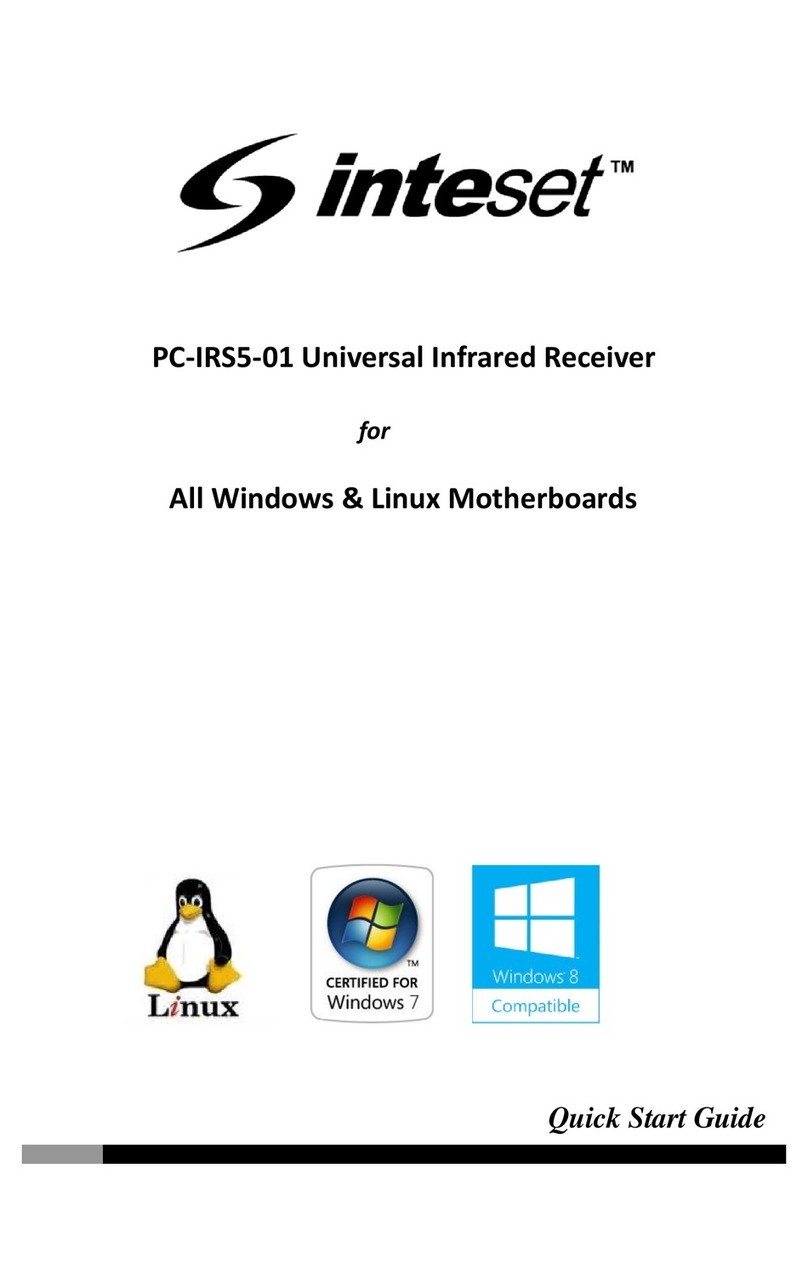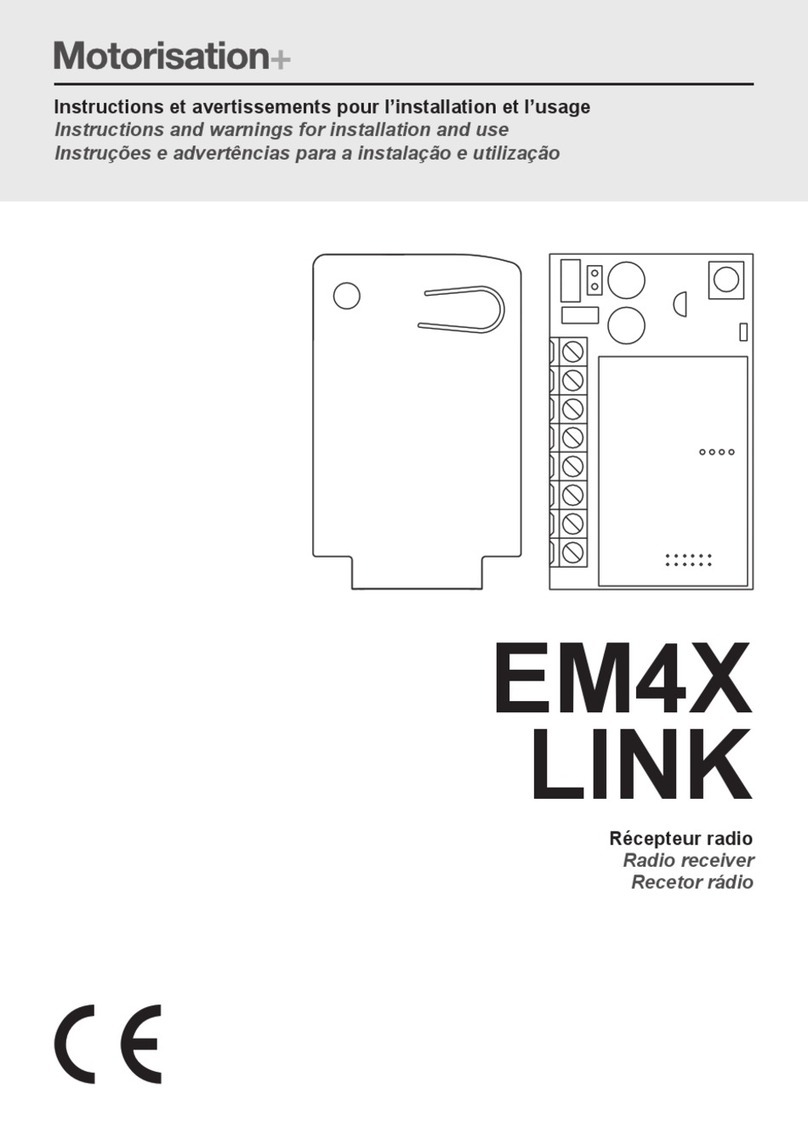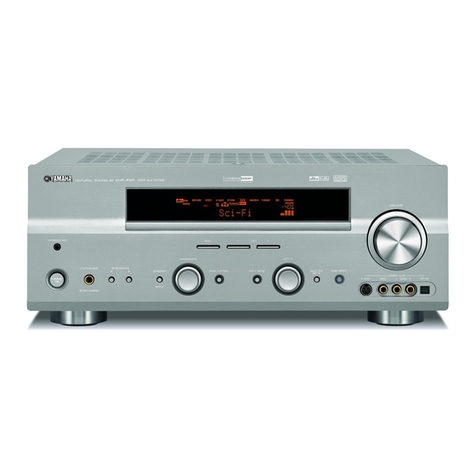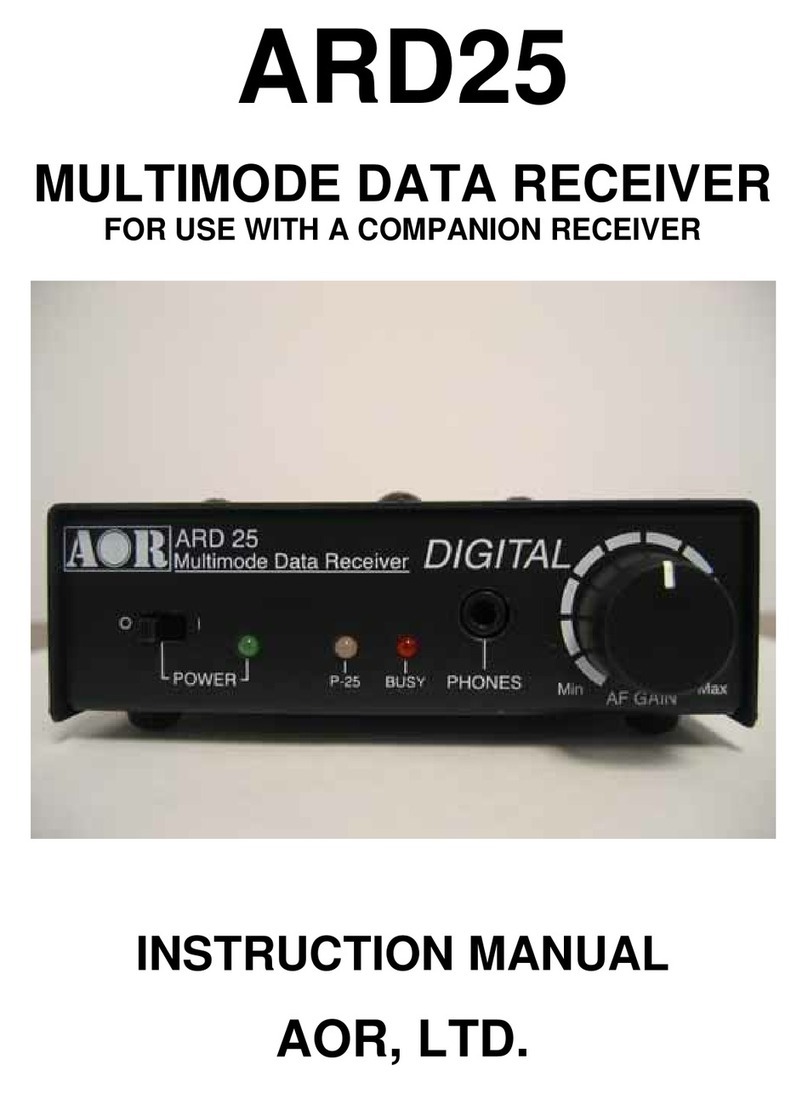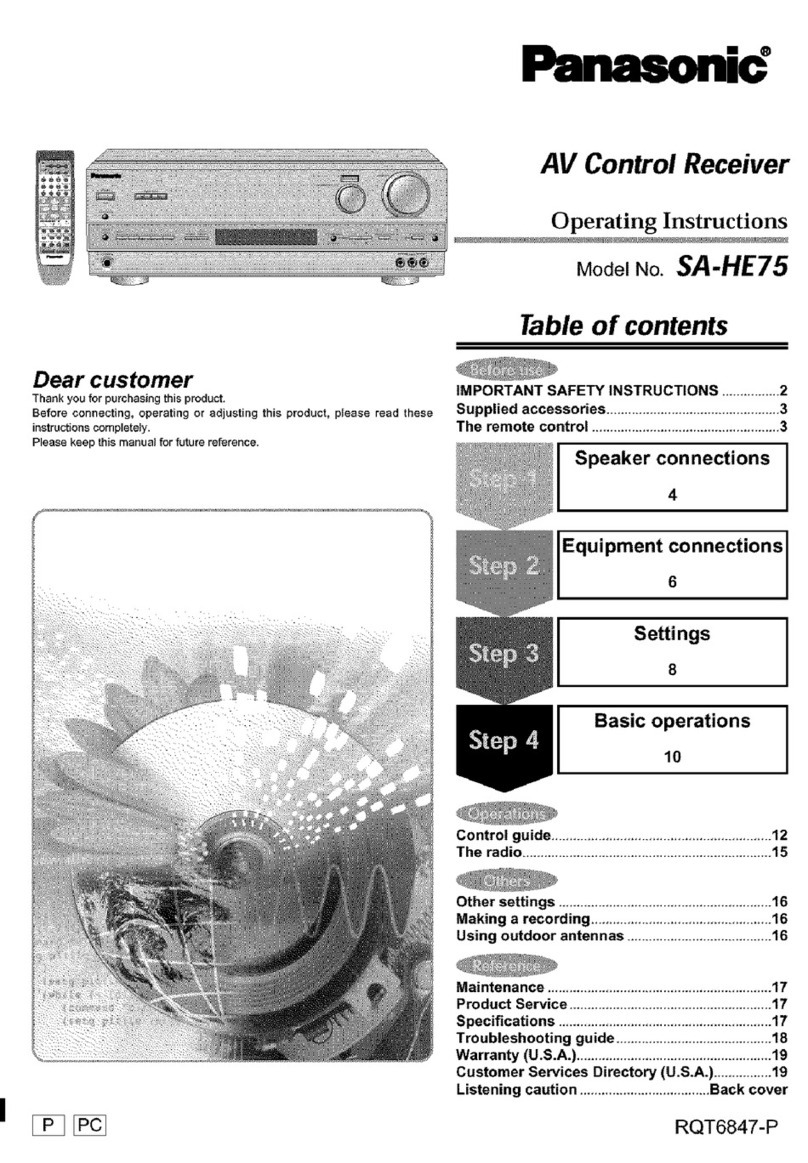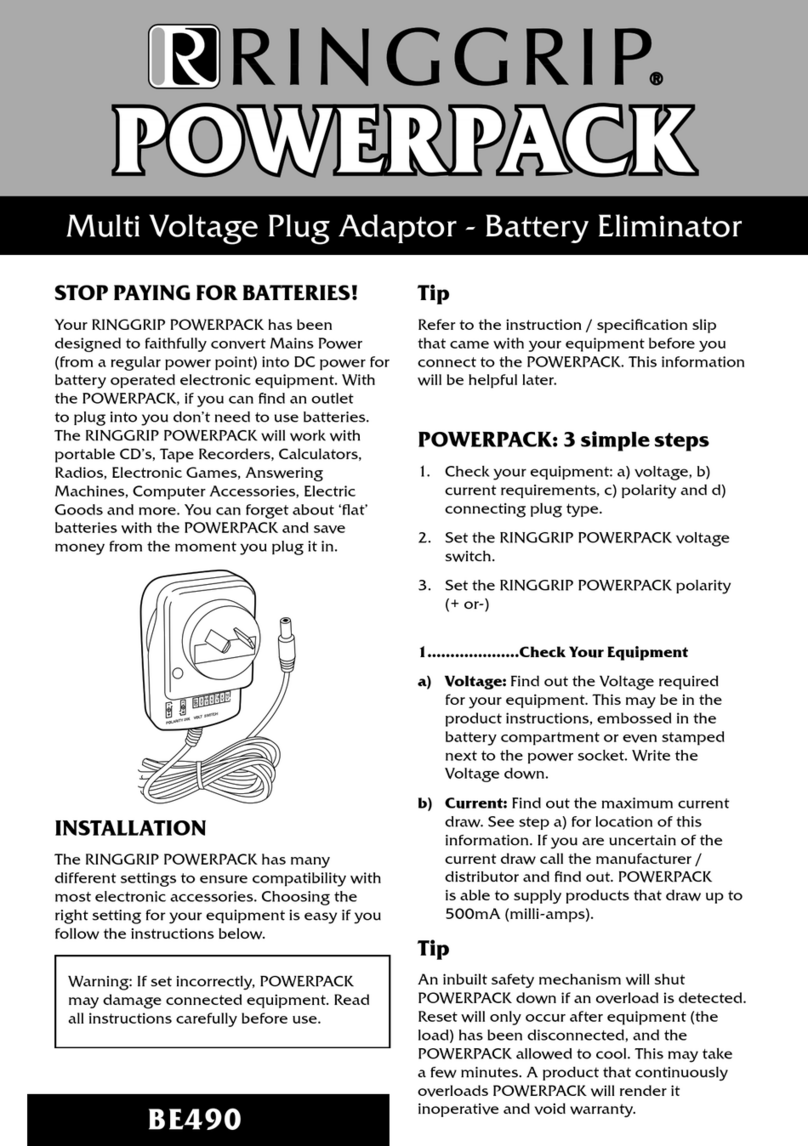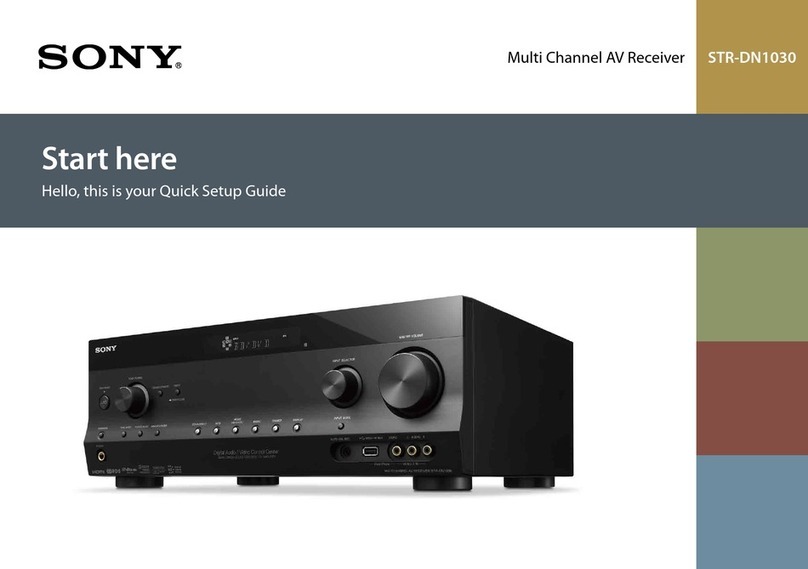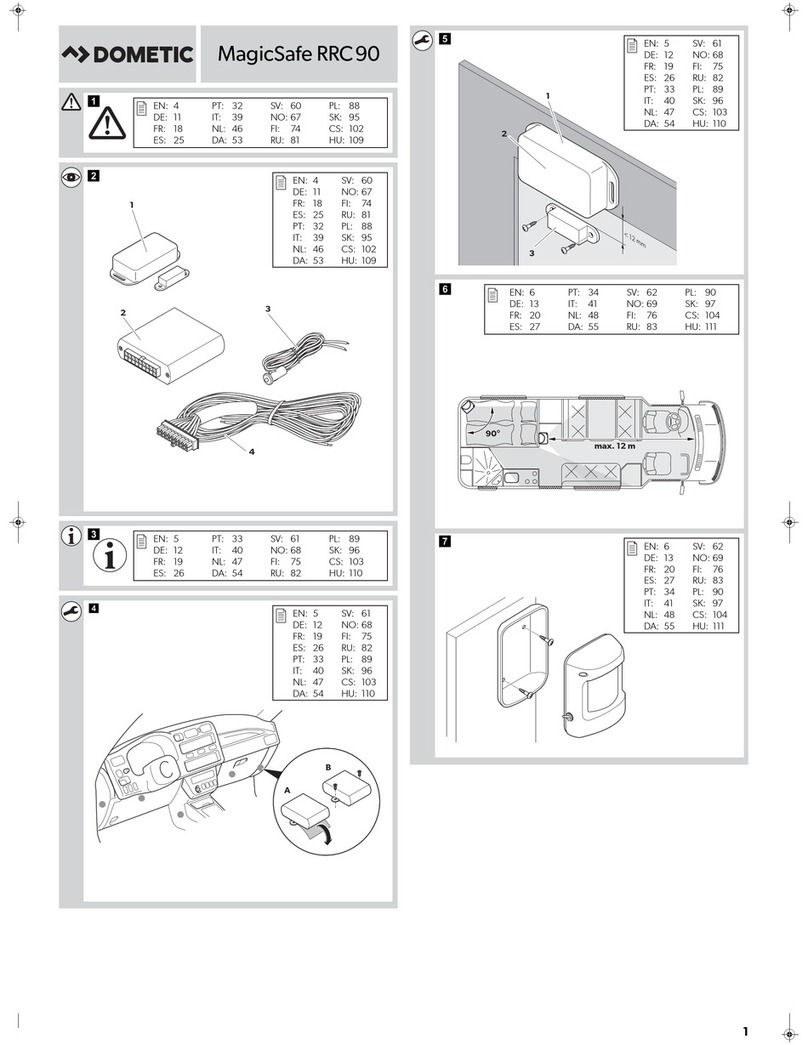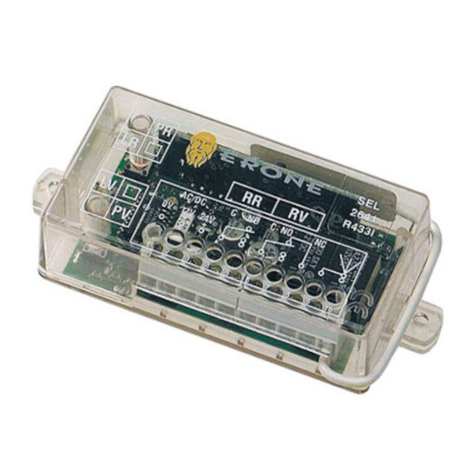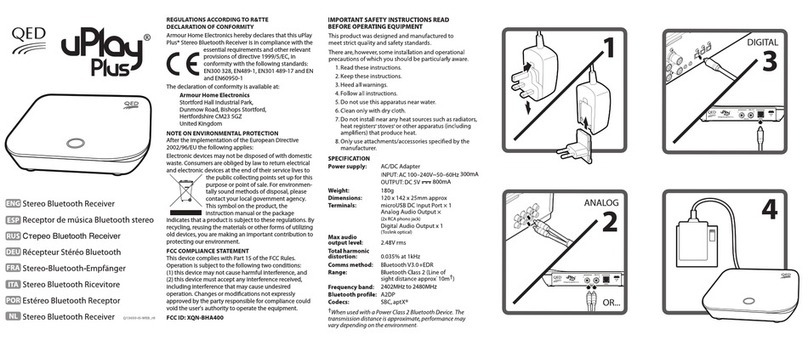ARIB 8495B User manual

Association of Radio Industries and Businesses (ARIB)
UWB (ULTRA-WIDEBAND)
RADIO SYSTEMS
ARIB STD-T91
ARIB STANDARD
ENGLISH TRANSLATION
Established on December 12th, 2006
ARIB STD-T91 Ver. 1.0

General Notes to the English translation of ARIB Standards and Technical Reports
1. The copyright of this document is ascribed to the Association of Radio Industries and
Businesses (ARIB).
2. All rights reserved. No part of this document may be reproduced, stored in a retrieval
system, or transmitted, in any form or
by any means, without the prior written
permission of ARIB.
3. The ARIB Standards and ARIB Technical Reports are usually written in Japanese
and approved by the ARIB Standard Assembly. This document is a translation into
English of the approved document for the purpose of convenience of users. If there are
any discrepancies in the content, expressions, etc., between the Japanese original and
this translated document, the Japanese original shall prevail.
4. The establishment, revision and abolishment of
ARIB Standards and Technical
Reports are approved at the ARIB Standard Assembly, which meets several times a
year. Approved ARIB Standards and Technical Reports, in their original language, are
made publicly available in hard copy, CDs or through web posting, generally in about
one month after the date of approval. The original document of this translation may
have been further revised and therefore users are encouraged to check the latest
version at an appropriate page under the following URL:
http://www.arib.or.jp/english/index.html

ARIB STD-T91
Introduction
With participation of radio communication equipment manufacturers, broadcasting
equipment manufacturers, telecommunication operators, broadcasters and general equipment
users, Association of Radio Industries and Businesses (ARIB) defines basic technical
requirements for standard specifications of radio equipment, etc. as an “ARIB STANDARD” in
the field of various radio systems.
In conjunction with national technical standards which are intended for effective spectrum
utilization and avoidance of interference with other spectrum users, an ARIB STANDARD is
intended as a standard for use by the private sector by compiling various voluntary standards
regarding the adequate quality of radio and broadcasting service, compatibility issues, etc. It
aims to enhance convenience for radio equipment manufacturers, telecommunication operators,
broadcasting equipment manufacturers, broadcasters and general users.
An ARIB STANDARD herein is published as “UWB (Ultra-Wideband) Radio Systems”. In
order to ensure fairness and transparency in the defining stage, the standard was decided by
consensus of the standard council with participation of interested parties including radio
equipment manufacturers, telecommunication operators, broadcasters, testing organizations,
general users, etc. with impartiality.
With the radio system described in the ARIB STANDARD herein, the electrical power
spreads over a wide bandwidth, and therefore it is necessary to avoid radio interference to
various radio systems in the band. In order to avoid harmful radio interferences to other radio
systems, “Operational Guidelines for UWB Radio Systems” and “Design Guidelines for UWB
Radio Systems” were also documented and attached hereto as a reference material.
It is our sincere hope that the standard would be widely used by radio equipment
manufacturers, testing organizations, general users, etc.


ARIB STD-T91
-i-
Contents
Introduction
Chapter 1 General Descriptions ........................................................................................................ 1
1.1 Outline ................................................................................................................................... 1
1.2 Scope of the Standard ........................................................................................................... 1
1.3 Reference regulations ........................................................................................................... 1
Chapter 2 Standard System .............................................................................................................. 3
2.1 System Overview................................................................................................................... 3
2.2 System Configurations.......................................................................................................... 3
Chapter 3 Technical Requirements for Radio Equipment .............................................................. 6
3.1 General Conditions ............................................................................................................... 6
3.2 Transmitter............................................................................................................................ 6
3.3 Receiver................................................................................................................................ 10
3.4 Controller ............................................................................................................................. 13
3.5 Connections with Telecommunication Circuit Equipment .............................................. 13
3.6 Antenna ................................................................................................................................ 14
3.7 Others................................................................................................................................... 14
Chapter 4 Measurement Methods................................................................................................... 15
Annex 1 Test Items in relation to Technical Regulations Conformity Certification for Specified
Radio Equipment .......................................................................................................................... 17
Annex 2 Operational Guidelines for UWB Radio Systems ........................................................... 18
Annex 3 Design Guidelines for UWB Radio Equipment ............................................................... 22


ARIB STD-T91
-1-
Chapter 1 General Descriptions
1.1 Outline
The standard defines requirements of the radio equipment of ultra-wideband radio stations
stipulated in item 2 of paragraph 2, Article 4.4 of Regulations for Enforcement of Radio Law
(This refers to the radio stations that mainly handle data transmissions with the required
frequency bandwidth of 450 MHz or more and uses 0.001 W or less for the antenna input power
(hereinafter referred to as “antenna power”) with use of frequency from 3.4GHz to 4.8 GHz or
from 7.25GHz to 10.25GHz for indoor use), and also the radio equipment of the radio stations of
“UWB (Ultra-Wideband) Radio System” for the communication application.
1.2 Scope of the Standard
The radio station of a UWB Radio System consists of radio equipment and data terminal
equipment (including one connected to telecommunication circuit facilities), etc. as shown in
the Figure 1-1.
The standard defines the said radio equipment.
Figure 1-1 Configuration of radio station of UWB Radio System
1.3 Reference regulations
In the standard, “RERL” refers to Regulations for Enforcement of Radio Law, “ORE” refers to
Ordinance Regulating Radio Equipment, “OTRCC” refers to Ordinance Concerning Technical
Regulations Conformity Certification etc. of Specified Radio Equipment, “OTF” refers to
Ordinance Concerning Terminal Facilities etc., “RTCCA” refers to Rules Concerning the
Data terminal e
q
ui
p
ment
,
etc.
Controller
•Interference prevention function
•Interference mitigation function
•Controls of radio transmission
Transmitter
Receiver
Radio equipment
Scope of the standard

ARIB STD-T91
-2-
Technical Conditions Compliance Approval etc. for Terminal Equipment, “NT” refers to a
Notification of the Ministry of Posts and Telecommunications if issued in 2000 or earlier, and a
Notification of the Ministry of Internal Affairs and Communications (MIC) if issued in 2001 or
later.

ARIB STD-T91
-3-
Chapter 2 Standard System
2.1 System Overview
UWB Radio System is a radio system that spreads electric power over a very wide bandwidth.
On the other hand, the standard does not specify a protocol layer.
2.2 System Configurations
In the radio equipment of the radio station of a UWB Radio System, a radio equipment not
connected to the AC mains power supply shall be permitted to emit radio waves only after it
receives a signal from another radio equipment connected to the AC mains power supply. (ORE,
Article 49.27)
Examples of a compliant system configuration are shown in Figure 2-1, 2-2 and 2-3.
(1) The case of radio equipment connected to the AC mains power supply which transmits
signals to another radio equipment:
If a radio equipment is connected to the AC mains power supply, it can start
transmission at any time.
Figure 2-1 Example of standard system configuration (1)
A1 A2
B
s
s
Notes:A1, A2: Radio equipment connected to the AC mains power supply.
B : Radio equipment not using AC mains power supply
s :SignaltransmittedbyA1.

ARIB STD-T91
-4-
(2) The case of radio equipment not connected to the AC mains power supply which transmits
signals to another radio equipment connected to the AC mains power supply:
If a radio equipment is not connected to the AC mains power supply, it can emit radio
waves only after it detects a signal from another radio equipment which is connected to
the AC mains power supply.
Figure 2-2 Example of standard system configuration (2)
r
s
s
B A1
Notes:A1, A2: Radio equipment connected to the AC mains power supply
B : Radio equipment not connected to the AC mains power supply
r :SignalreceivedbyB.
s :SignaltransmittedbyB.
A2

ARIB STD-T91
-5-
(3) The case of radio equipment not connected to the AC mains power supply which transmits
signals to another radio equipment not connected to theAC mains power supply:
If a radio equipment is not connected to the AC mains power supply and transmits
signal to another radio equipment not connected to the AC mains power supply, it can
emit radio waves after it receives signal from another radio equipment that is connected
to the AC mains power supply.
Figure 2-3 Example of standard system configuration (3)
B1
B2
r
A
Notes:A : Radio equipment connected to the AC mains power supply
B1, B2 : Radio equipment not connected to the AC mains power supply
r :SignalreceivedbyB1.
s :SignaltransmittedbyB1.
s

ARIB STD-T91
-6-
Chapter 3 Technical Requirements for Radio Equipment
3.1 General Conditions
(1) Contents of communications (RERL, Article 4.4)
Content of communication shall primarily be for data transmissions.
(2) Communication methods (ORE,Article 49.27)
Communication methods shall be either simplex operation, full duplex operation or
half duplex operation.
(3) Operating Frequency band (RERL,Article 4.4)
Operating frequency band to be used shall be from 3.4 GHz to 4.8 GHz or from 7.25
GHz to 10.25 GHz.
(4) Usage environment condition (RERL, Article 4.4)
The radio equipment shall be used indoors.
3.2 Transmitter
(1) Modulation method
There is no specific restriction on the modulation method.
(2) Antenna power (ORE, Article 49.27)
Antenna power for the operating frequency band shall satisfy respective values as
follows:
Average power per 1MHz bandwidth shall be -41.3 dBm or less.
As an interim measure until December 31, 2008, the following condition
shall apply: Of radio equipment with use of frequency from 3.4 GHz to 4.8
GHz, those without an interference mitigation function stipulated in 3.4
(2) shall have the average power of -70 dBm or less per 1 MHz bandwidth
within the frequency band from 3.4 GHz to 4.2 GHz, and the average
power of -41.3 dBm or less per 1 MHz bandwidth within the frequency
band from 4.2 GHz to 4.8 GHz. (According to ORE, Supplementary
provision (MIC Ordinance No. 105 on August 1, 2006).)

ARIB STD-T91
-7-
Peak power per 50MHz bandwidth shall be 0 dBm or less.
As an interim measure until December 31, 2008, the following condition
shall apply:
Of radio equipment with use of frequency from 3.4 GHz to 4.8 GHz, those
without an interference mitigation function stipulated in 3.4 (2) shall have
a peak power of -30 dBm or less per 50 MHz bandwidth within the
frequency band from 3.4 GHz to 4.2 GHz, and the peak power of 0 dBm or
less per 50 MHz bandwidth within the frequency band from 4.2 GHz to 4.8
GHz. (According to ORE, Supplementary provision (MIC Ordinance No.
105 on August 1, 2006).)
(3) Tolerances for antenna power (ORE, Article 14)
The tolerance of the antenna power from shall be less than the allowed maximum
value + 20%.
(4) Transmission data rate (ORE, Article 49.27)
Transmission data rate shall be higher than 50 Mbps excepting for such cases as noise
or interference from other radio stations need be avoided.
(5) Frequency bandwidth (ORE, Article 49.27)
Frequency bandwidth between the upper and lower frequencies for which the
radiation power drops 10 dB below the maximum radiation power shall be 450 MHz or
more.
(6) Permissible values for occupied bandwidth (ORE, Article 6 / Table 2-49.)
Permissible values for the occupied bandwidth shall be as follows:
For those with use of the frequency from 3.4 GHz to 4.8 GHz 1.4 GHz
For those with use of the frequency from 7.25 GHz to 10.25 GHz 3 GHz
(7) Permissible values for unwanted emission intensity (ORE, Article 7 / Table 3-41)
Permissible values for the unwanted emission intensity from the transmitter are as
follows:

ARIB STD-T91
-8-
Permissible values for unwanted emission intensity
Frequency band
Average power per 1 MHz
bandwidth
Peak power per 1 MHz
bandwidth
Less than 1,600 MHz -90 dBm or less -84 dBm or less
From 1,600 MHz to 2,700 MHz -85 dBm or less -79 dBm or less
From 2,700 MHz to 10.6 GHz -70 dBm or less -64 dBm or less
From 10.6 GHz to 10.7 GHz -85 dBm or less -79 dBm or less
From 10.7 GHz to 11.7 GHz -70 dBm or less -64 dBm or less
From 11.7 GHz to 12.75 GHz -85 dBm or less -79 dBm or less
More than 12.75 GHz -70 dBm or less -64 dBm or less
Note: In the case that the use of the frequency is within a range from 3.4 GHz to 4.8
GHz, the antenna power for the frequency band from 3.4 GHz to 4.8 GHz shall
comply with Article 3.2 (2) instead of 3.2 (7). Similarly, in the case that the use
of the frequency is within a range from 7.25 GHz to 10.25 GHz, the antenna
power for the frequency band from 7.25 GHz to 10.25 GHz shall comply with
the Article 3.2 (2) instead of 3.2 (7).

ARIB STD-T91
-9-
-90
-80
-70
-60
-50
-40
1413121110987654321
1) With an interference mitigation function
-90
-80
-70
-60
-50
-40
1413121110987654321
2) Without an interference mitigation function (until December 31, 2008)
Figure 3-1 Permissible values for unwanted emission intensity
(when using frequency from 3.4 GHz to 4.8 GHz)
Antenna power density
Permissible values for unwanted emission intensity
Provision by average power
Provision by peak power
Frequency [GHz]
Power density [dBm / MHz]
Antenna power density
Permissible values for unwanted emission intensity
Provision by average power
Provision by peak power
Frequency [GHz]
Power density [dBm / MHz]

ARIB STD-T91
-10-
-90
-80
-70
-60
-50
-40
1413121110987654321
Figure 3-2 Permissible values for unwanted emission intensity
(when using frequency from 7.25 GHz to 10.25 GHz)
3.3 Receiver
(1) Limit on Secondary Radiated Emissions, etc. (ORE, Article 24)
Limit on Secondary Radiated Emissions, etc. from the receiver shall be as follows:
Average power at any 1 MHz bandwidth
Frequency band
When using frequency
from 3.4 GHz to 4.8 GHz
When using frequency from
7.25 GHz to 10.25 GHz
Less than 1,600 MHz -90 dBm or less
From 1,600 MHz to 2,700 MHz -85 dBm or less
From 2,700 MHz to 3.4 GHz -70 dBm or less
From 3.4 GHz to 4.8 GHz -54 dBm or less -70 dBm or less
From 4.8 GHz to 7.25 GHz -70 dBm or less
From 7.25 GHz to 10.25 GHz -70 dBm or less -54 dBm or less
From 10.25 GHz to 10.6 GHz -70 dBm or less
From 10.6 GHz to 10.7 GHz -85 dBm or less
From 10.7 GHz to 11.7 GHz -70 dBm or less
From 11.7 GHz to 12.75 GHz -85 dBm or less
More than 12.75 GHz -70 dBm or less
Antenna power density
Frequency [GHz]
Power density [dBm / MHz]
Permissible values for
unwanted emission intensity
Provision by average power
Provision by peak power

ARIB STD-T91
-11-
-90
-80
-70
-60
-50
-40
1413121110987654321
1) With an interference mitigation function
-90
-80
-70
-60
-50
-40
1413121110987654321
2) Without an interference mitigation function (until December 31, 2008)
Figure 3-3 Limit on Secondary Radiated Emissions
(when using frequency from 3.4 GHz to 4.8 GHz)
Antenna power density
Frequency [GHz]
Power density [dBm / MHz]
Antenna power density
Frequency [GHz]
Power density [dBm / MHz]

ARIB STD-T91
-12-
-90
-80
-70
-60
-50
-40
1413121110987654321
Figure 3-4 Limit on Secondary Radiated Emissions
(when using frequency from 7.25 GHz to 10.25 GHz)
As an interim measure until December 31, 2008, the following conditions shall apply:
For radio equipment using radio with frequency from 3.4 GHz to 4.8 GHz, those
without an interference mitigation function stipulated in 3.4 (2) shall have the limit on
secondary emissions, etc. as in the table below. (According to ORE, Supplementary
provision (MIC Ordinance No. 105 on August 1, 2006).)
Average power at any 1 MHz bandwidthFrequency band
When using frequency from 3.4 GHz to 4.8 GHz
(without an interference mitigation function
stipulated in 3.4 (2).)
Less than 1,600 MHz -90 dBm or less
From 1,600 MHz to 2,700 MHz -85 dBm or less
From 2,700 MHz to 4.2 GHz -70 dBm or less
From 4.2 GHz to 4.8 GHz -54 dBm or less
From 4.8 GHz to 10.6 GHz -70 dBm or less
From 10.6 GHz to 10.7 GHz -85 dBm or less
From 10.7 GHz to 11.7 GHz -70 dBm or less
From 11.7 GHz to 12.75 GHz -85 dBm or less
More than 12.75 GHz -70 dBm or less
Antenna power density
Frequency [GHz]
Power density [dBm / MHz]

ARIB STD-T91
-13-
3.4 Controller
A controller shall have the following devices and functions, and meet each of the following
conditions.
(1) Interference prevention function (RERL,Article 6.2 / ORE Article, 9.4)
The radio equipment of the radio station shall mainly be used in the same premises. It
shall automatically transmit identification signs or receive them.
(2) Interference mitigation function (ORE,Article 49.27)
The radio equipment using radio with frequency from 3.4 GHz to 4.8 GHz shall have
the interference mitigation function that meets the technical conditions notified
separately by Minister of Internal Affairs and Communications.
As an interim measure until December 31, 2008, it is not mandatory to install an
interference mitigation function. (According to ORE, Supplementary provision
(MIC Ordinance No. 105 on August 1, 2006))
When the interim measure is applied, the description of 3.2 (2) shall be noted for
the antenna power, the description of 3.2 (7) for permissible values for unwanted
emission intensity and the description of 3.3 (1) for the limit on secondary radiated
emissions, etc.
(3) Controls of radio emission (ORE,Article 49.27)
A radio equipment not connected to the AC mains power supply shall be permitted to
emit radio waves only after it receives a signal from another radio equipment connected
to the AC mains power supply.
3.5 Connections with Telecommunication Circuit Equipment
A radio equipment that is connected to the telecommunication circuit equipment shall meet
the following conditions:
(1) Identification devices (OTF,Article 9)
An identification device shall have a unique identification sign (sign designed to
identify the radio equipment used for the terminal equipment and to be collated when
configuring a communication channel).
(2) Identification signs (NT No. 424 in 1994)
The coding length of the identification sign shall be 48 bits or more.
(3) Method to judge the availability of the operating frequency band (NT No. 424 in 1994)
Judgment of the availability of the operating frequency band shall be made by
detecting a radio wave emitted from another radio station, or by calculating the received
signal and detecting the signal level. However, for the equipment that has a function to

ARIB STD-T91
-14-
disconnect the channel when the communication quality is degraded, the judgment may
be replaced by checking the operating condition of the channel.
3.6 Antenna
(1) Antenna structures
There is no specific provision for the antenna structure.
(2) Gain of the transmitting antenna (ORE,Article 49.27)
Absolute gain of the transmitting antenna shall be 0 dBi or less. However, in the case
that the e.i.r.p. (Equivalent Isotropic Radiated Power) falls short of the antenna power
provided in 3.2 (2) added with the transmitting antenna gain of 0 dBi absolute gain, the
difference may be complemented by adjusting the gain of the transmitting antenna.
(3) Gain of the receiving antenna
There is no specific provision for the gain of the receiving antenna.
3.7 Others
(1) Cabinet (ORE, Article 49.27)
The cabinet shall be constructed so as to be not be easily tampered with.
(2) Mark of usage restrictions (ORE, Article 49.27)
A mark of the usage restriction that radio waves can be emitted only indoor shall be
visibly shown on the cabinet.
(3) Mark in relation to technical regulations conformity certification (OTRCC,Article 8)
A mark in relation to technical regulations conformity certification in the specified
format shall be visibly displayed on the radio equipment.
(4) Mark in relation to technical conditions compliance approval for terminal equipment (RTCCA,
Article 10)
In case a radio equipment connects to the telecommunication circuit equipment, a
mark in relation to technical conditions compliance approval for terminal equipment in
the specified format shall be visibly displayed on it.
This manual suits for next models
4
Table of contents
